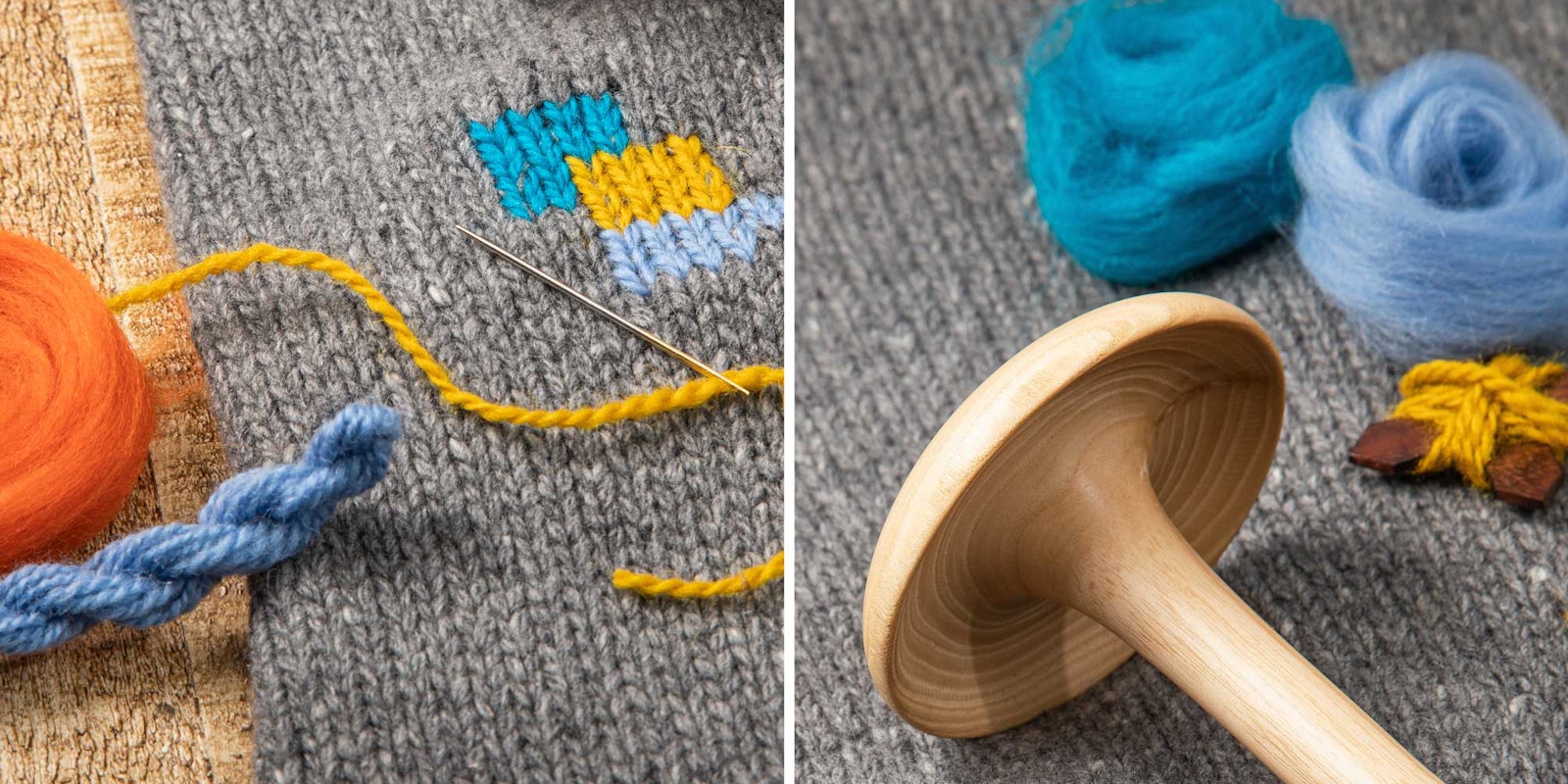Having just wrapped up the Summer 2023 issue of Spin Off, I’ll admit that I’ve got mending on the brain. Let’s be honest, though—I’ve been mending garments for most of my adult life, both as a way to prolong the usefulness of something I can’t bear to get rid of, and as an extension of the frugal lifestyle I’ve always been accustomed to. Having a child also necessitates being able to wield a needle and thread, as anyone with kids can attest to!
However, it wasn’t until we began working on the summer issue of Spin Off with the theme of “Mend, Renew, and Make Do” that I started paying closer attention to what I’d call “decorative” mends. Visible mending is the more common term, and it has become quite popular, with clever, drool-worthy examples popping up everywhere on social media. Thinking of giving it a try? Here are five tips from some of my favorite resources as a spinner who’s about to invest a little bit of time and precious handspun in mending a couple of well-worn items that I’d like to breathe new life into.
1. Choose fibers thoughtfully.
In “3 Tips for Darning Well,” Kate Larson reminds us of a few things to keep in mind when spinning for mending. My favorite tip is to think about how your fabric will be used and laundered, which will dictate whether you’re using cotton threads for something as sturdy as jeans, or handspun silk or other more delicate fibers on items that will be hand-washed.
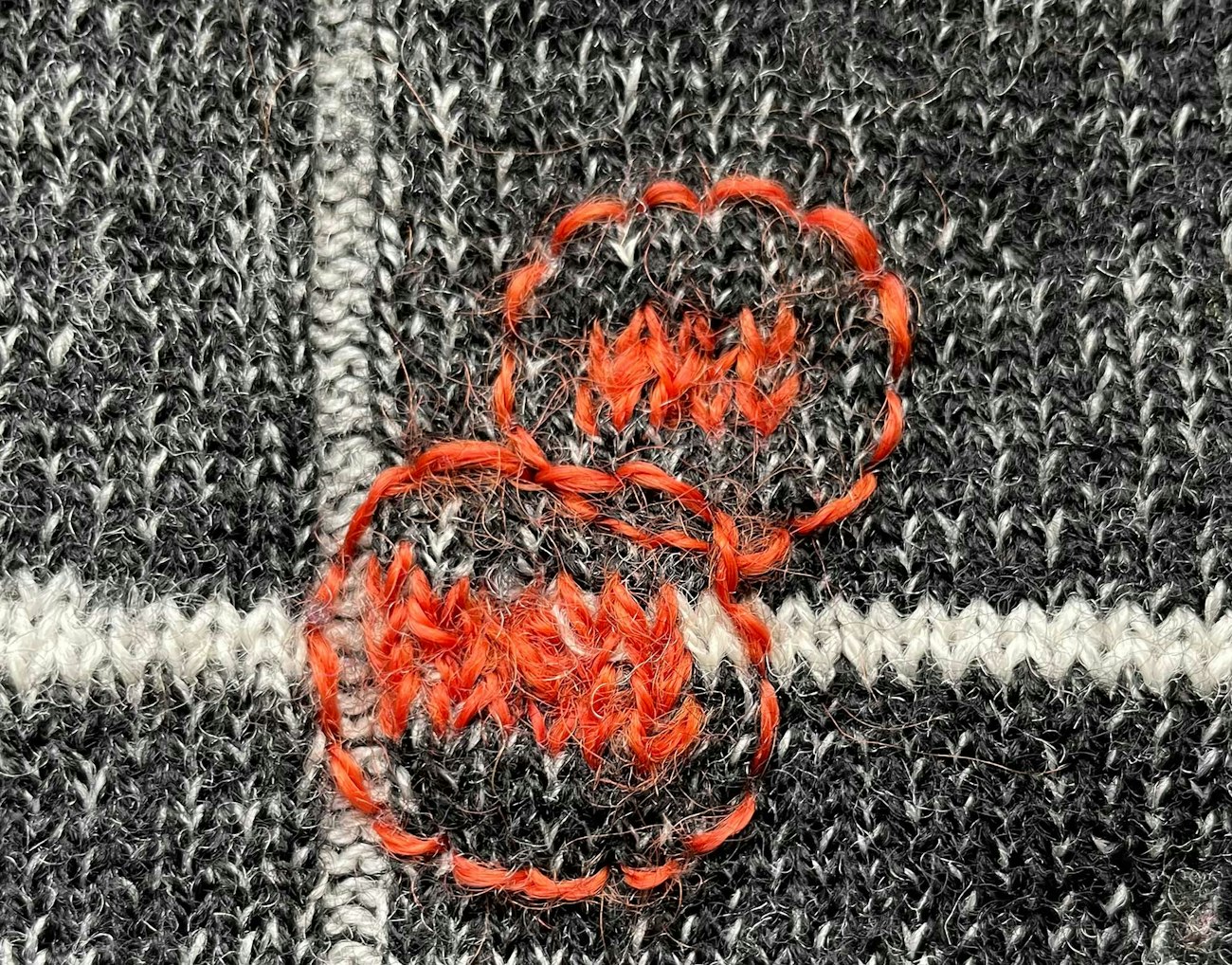 Consider how your item will be laundered and worn when determining which type of fiber to spin for your mends. Photo by Kate Larson
Consider how your item will be laundered and worn when determining which type of fiber to spin for your mends. Photo by Kate Larson
2. Help your yarn slide through.
There are several great ideas in this roundup of tips for how to make your visible mending project a success. My favorite? Use beeswax or Thread Magic to condition your yarn prior to use, since even worsted-spun yarns can be abraded by stitching.
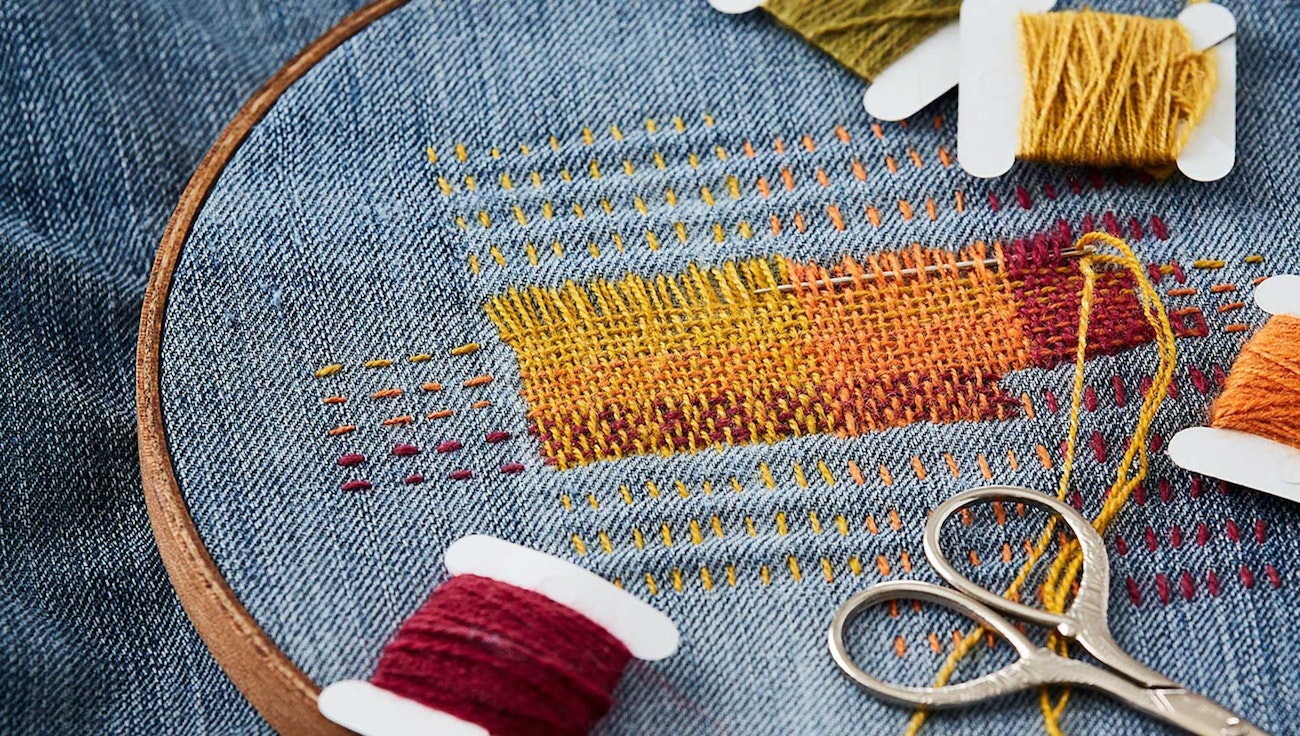 Conditioning your yarn will help it slide through your fabric more easily and prevent fraying. Photo by George Boe
Conditioning your yarn will help it slide through your fabric more easily and prevent fraying. Photo by George Boe
3. Pin-loom patches!
While my fingering-weight handspun will be great for darning holes in my delicate sweaters, my worsted-weight yarn would be perfect to weave a pin-loom patch. In her article “Visible Mending for Weavers,” Handwoven editor Susan Horton shows us several examples of how she used woven patches to mend her garments.
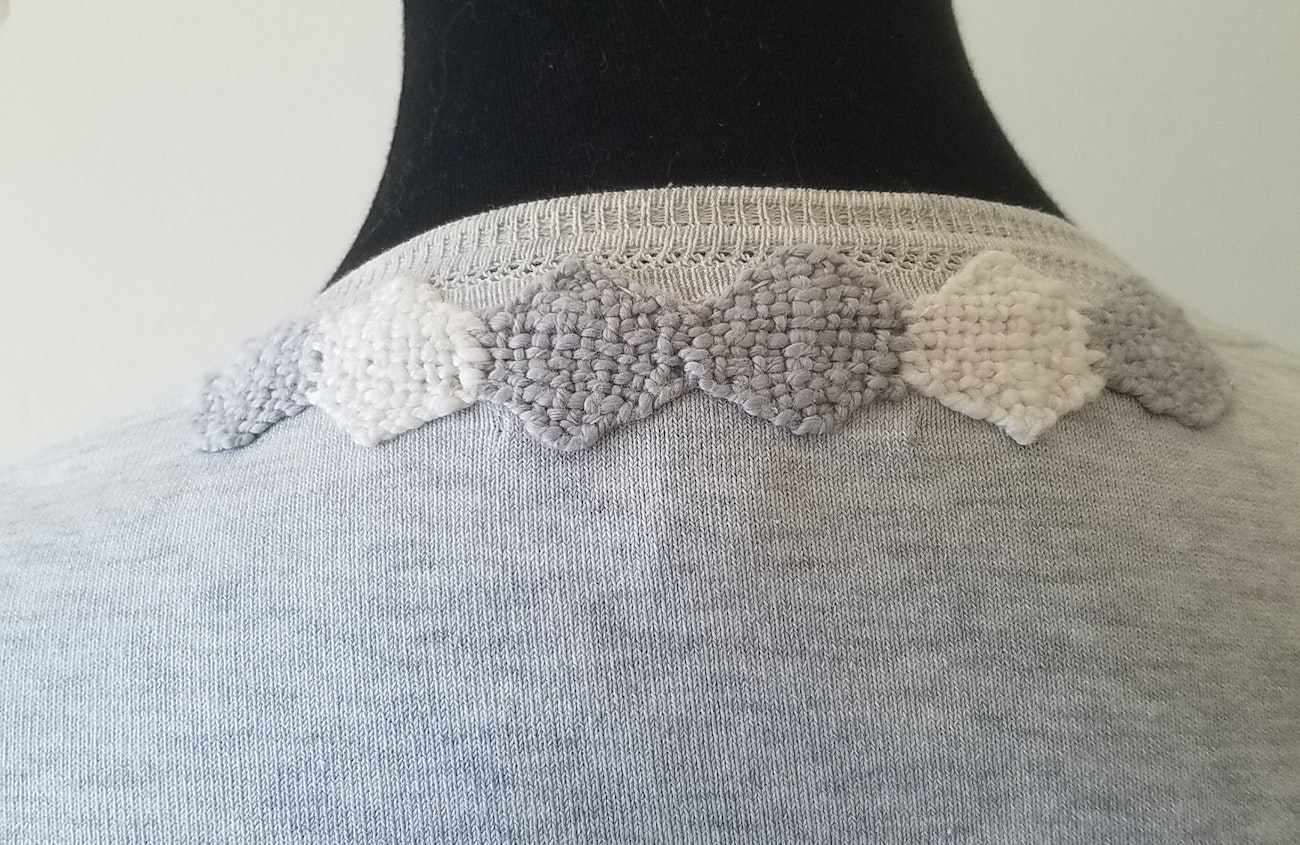 Susan used a 1" hexagon loom to weave small hexagons using a soft cotton yarn and then sewed them together into a strip to mend a seam on her sweater. Photo by Susan E. Horton
Susan used a 1" hexagon loom to weave small hexagons using a soft cotton yarn and then sewed them together into a strip to mend a seam on her sweater. Photo by Susan E. Horton
4. High twist for smooth yarns and durable mends.
Spin Off contributor Madeline Keller-King experimented with two types of darning looms for mends that needed to be durable and strong. What she discovered was that yarn spun with a firm twist stood up to abrasion and tension and created smoother yarns that didn’t get snagged on the loom’s hooks. I haven’t used a Speedweve-type loom yet, but Kate Larson makes it look very doable with her video tutorial “Visible Mending with a Darning Loom.”
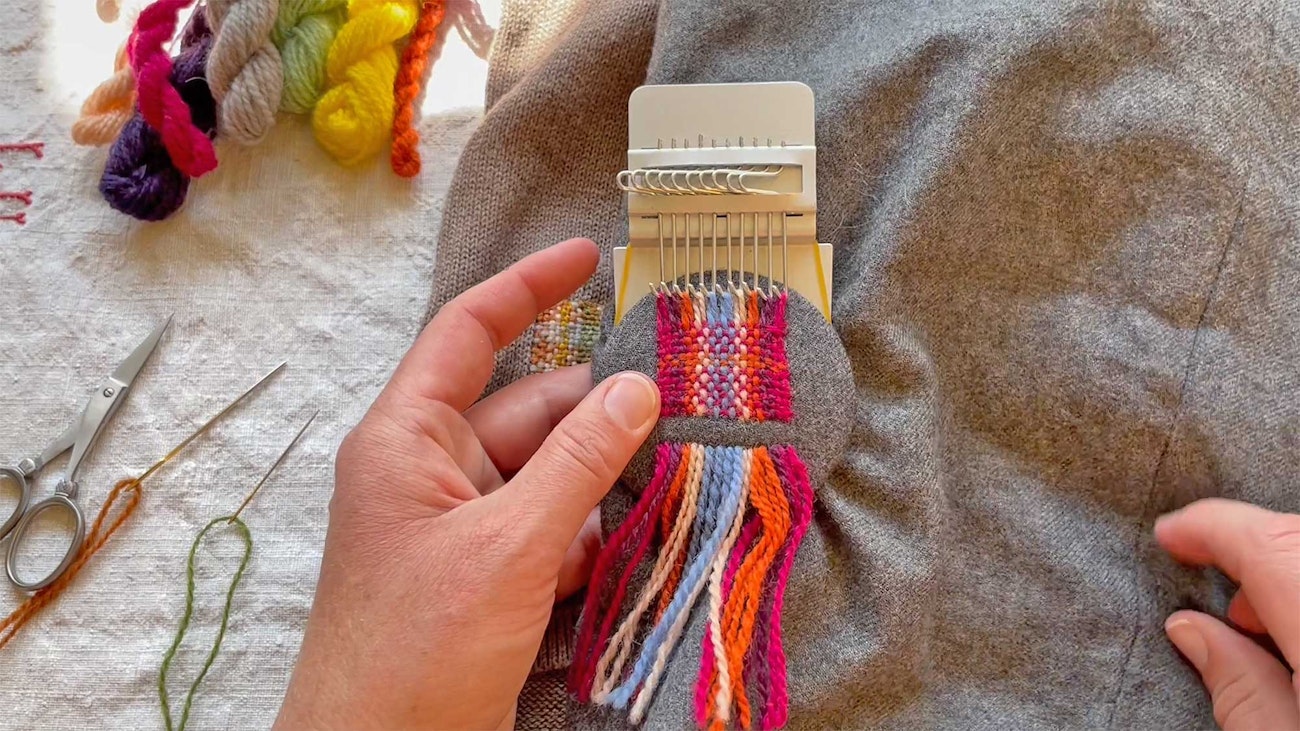 Watch Kate’s tutorial for spinners on how to get started with a darning loom. Photo courtesy of Long Thread Media
Watch Kate’s tutorial for spinners on how to get started with a darning loom. Photo courtesy of Long Thread Media
5. Think outside the box.
And, just for fun, I like perusing this photo gallery of Spin Off readers’ visible mends for inspiration. I would have never thought to use my handspun to mend a basket that’s broken along the edges or to patch a felted hat, but those are just two of the clever mends shared by our readers.
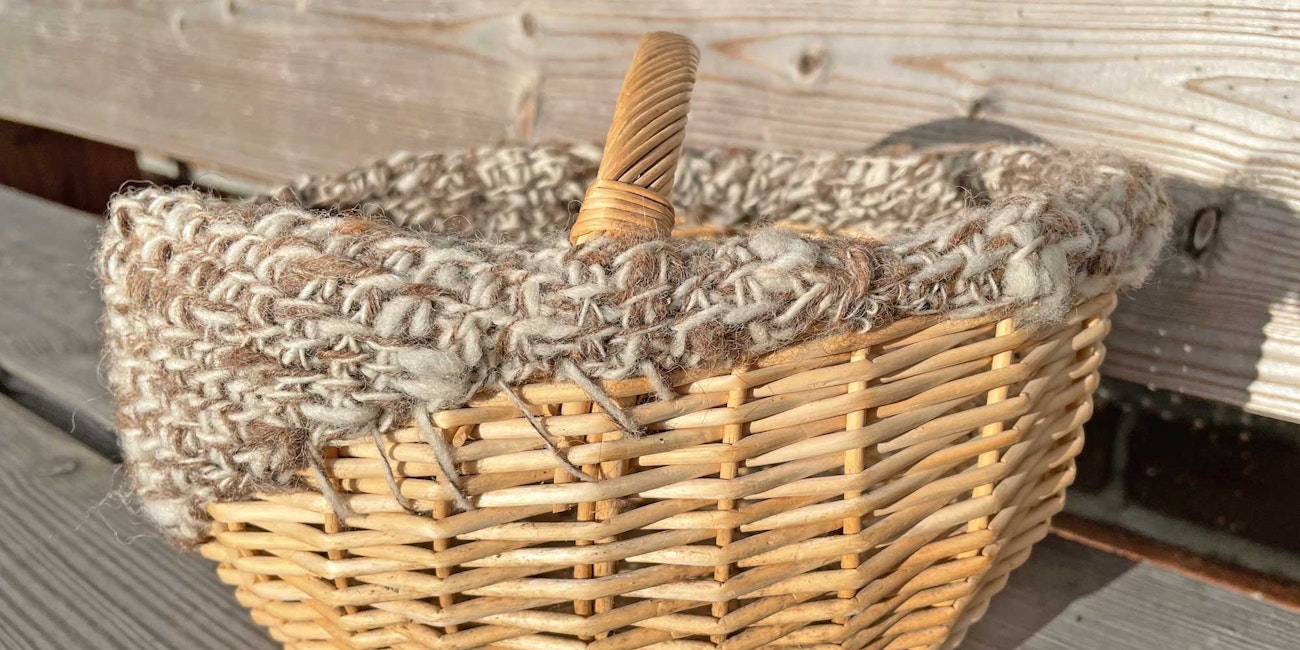 Basket repair worked with handspun yarns. Courtesy of A. Sabine Schröder-Gravendyck
Basket repair worked with handspun yarns. Courtesy of A. Sabine Schröder-Gravendyck
For more examples of visible mending, check out Spin Off Summer 2023.
Debbie Blair is the associate editor of Spin Off magazine. A lifelong crafter and avid reader, she finds her happy place reading and relaxing next to a mountain stream.

